#Figma to HTML Service
Explore tagged Tumblr posts
Text
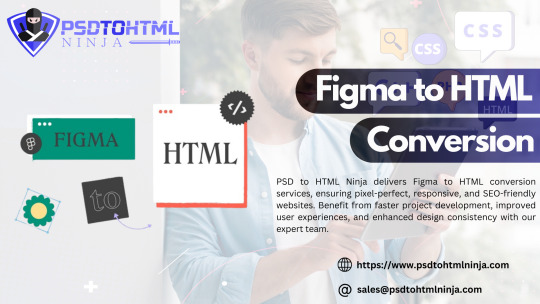
Figma to HTML, Figma to HTML Conversion — PSDtoHTMLNinja
Experience the Figma to HTML Conversion expertise of PSD to HTML Ninja. Seamlessly convert Figma designs to HTML with precision. Save time and ensure visual integrity in your web project by choosing us for your Convert Figma to HTML and Export Figma to HTML needs.
#Figma to HTML Conversion#Figma to HTML#Figma to HTML Service#Figma to HTML Conversion Service#Convert Figma to HTML#Export Figma to HTML#Figma Export to HTML#Figma to Code
0 notes
Text
#website development#ai solutions#custom software development#mobile application development#ui ux design#reactjs#javascript#figma#html css#generative ai#gen ai#ai writing#llm#ai technology#artificial intelligence#seo services#web development#flutter app development#hiring#ruby on rails development company#internship#freshers#career#job
0 notes
Text
Figma to HTML Conversion Service
Transform your Figma designs into fully functional HTML sites with ease.
Ready to take the next step?
Start your conversion today:- https://bit.ly/3tRt1pM.

0 notes
Text
Revamping Your Shopify Store: A Guide to Incorporating Modern Design Elements
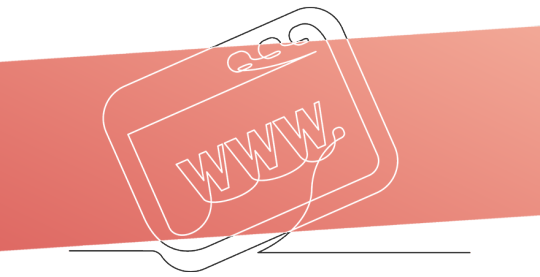
Transform your Shopify store with the latest design trends to enhance user experience and boost conversions.
Introduction
In the fast-paced world of e-commerce, staying ahead of design trends is not just beneficial; it’s essential. A well-designed Shopify store can significantly enhance user experience, increasing engagement and sales. This guide will walk you through incorporating modern design elements into your Shopify store, ensuring it remains fresh, relevant, and appealing.
Understanding Modern Design Elements
Modern design elements in e-commerce blend aesthetics with functionality, creating a seamless shopping experience.
Key components include intuitive color schemes, readable typography, and structured layouts.
These elements work together to form a cohesive look that resonates with your brand and appeals to your target audience.

Step 1: Evaluating Your Current Design
Start with a thorough audit of your existing Shopify store. Look at your site from a customer’s perspective and note areas for improvement. Consider user feedback, analyze your conversion rates, and assess the overall visual appeal. Identifying these areas will set a clear direction for your revamp.
Step 2: Choosing a New Color Scheme
Color significantly impacts consumer perception and behavior. Select a color scheme that reflects your brand’s personality and appeals to your target demographic. Utilize color psychology to evoke the desired emotions and actions from your visitors. Tools like Coolors or Adobe Color can help you create a modern palette that complements your products and branding.
Step 3: Updating Typography
Typography influences how users digest content on your site. Choose fonts that are easy to read and align with your brand’s tone. Consider using a combination of typefaces for headings and body text to enhance readability.
Shopify offers a range of customizable font options, allowing you to refresh your store’s look with just a few clicks.
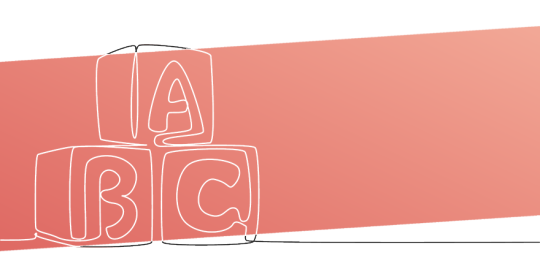
Step 4: Rethinking Layout Structure
A well-structured layout guides visitors through your store, improving user flow and increasing the likelihood of purchase. To showcase your products effectively, embrace modern trends like minimalism, card layouts, or dynamic grids. Shopify’s theme store provides templates that adhere to contemporary layout standards, making finding one that suits your brand easier.
Step 5: Incorporating New Design Elements
Elevate your store’s aesthetic by adding modern design features such as animations, micro-interactions, or video backgrounds. These elements can enhance storytelling and engage users. However, ensure these additions do not slow down your site, as speed is crucial for retaining customers and improving SEO.
Conclusion
Regularly updating your Shopify store’s design is vital in maintaining a competitive edge. Incorporating modern design elements can create a more engaging and effective online presence. Remember, the goal is to enhance the shopping experience without overwhelming visitors.

Call-to-Action
Take the first step towards a more modern and effective Shopify store today!
Experiment with new design elements, but always prioritize your users’ needs and preferences.
For further inspiration and resources, visit Shopify’s design blog and explore the latest themes and features.
#shopify#e commerce#business#e commerce business#ux desgin#ui design#ux ui design#ui ux design#web design#graphic design#canva#adobe#adobe photoshop#adobe illustrator#adobe stock#adobe firefly#figma#figmadesign#figma to html#sketch#xd#liquid#apps#shopify agency#shopify app development#shopify developers#shopify development company#shopify development agency#shopify development services#outsourcing
1 note
·
View note
Text
Having a solid online presence is crucial for both businesses and individuals in the modern digital world. A well-designed website can set a brand apart, provide an excellent user experience, and enhance visibility on search engines. This is where web designing plays a critical role. If you're located in or around Jalandhar and looking to build a career in web design, TechCadd Institute offers one of the most comprehensive and industry-relevant web designing courses — conveniently located opposite PIMS (Punjab Institute of Medical Sciences).
Why Choose TechCadd Institute for Web Designing? TechCadd Institute is a leading name in technical training in Jalandhar. With experienced trainers, practical curriculum, and hands-on projects, the institute ensures that learners are industry-ready from day one. Whether you're a student, a professional looking to switch careers, or an entrepreneur aiming to build your own website, this course is tailored for all.
Topics Covered in the Web Designing Course The training begins with fundamental concepts and steadily moves toward more advanced topics. It is designed specifically for web designing for beginners, ensuring that even those without prior coding experience can grasp everything comfortably.
Key highlights of the course:
HTML & CSS: Understand how to create the layout of web pages and apply styling for visual appeal.
JavaScript: Enhance your websites with interactive elements and real-time functionalities.
Responsive Web Designing: Design websites that look great on desktops, tablets, and mobile phones.
Bootstrap Framework: Speed up design with pre-built responsive components.
UI/UX Web Design Principles: Understand the difference between User Interface (UI) and User Experience (UX), and learn to apply best practices for designing intuitive and user-friendly interfaces.
Graphic Tools: Use tools like Figma and Adobe XD to create stunning layouts and mockups.
Web Hosting & Domain Setup: Get your website live and learn how to manage hosting and domains.
Portfolio Development: Build your own live website portfolio to showcase your skills to potential employers or clients.
Why Learn Web Designing? Web designing is not just about making websites look good. It’s about functionality, accessibility, responsiveness, and user experience. As the online market expands, the need for talented web designers is growing across different industries.
Here are some top reasons why you should learn web designing:
High demand in freelancing, startups, and tech companies.
Work from anywhere – With only a laptop and online access, you’re free to work from virtually anywhere.
Creative satisfaction – Express your creativity by turning ideas into visually stunning designs.
Lucrative salary packages and freelance opportunities.
Career flexibility – progress into UI/UX design, front-end development, or even digital marketing.
Who Should Join This Course? This course is ideal for:
Students who want to enter the IT field.
Professionals looking to upgrade their skill set.
Business-minded individuals aiming to build and control their online presence.
Freelancers aiming to provide web design services.
Anyone interested in learning the art of designing beautiful, functional websites.
Learn from the Best – TechCadd Advantage At TechCadd, learning is not limited to theory. The instructors emphasize real-world projects and practical implementation. The curriculum is regularly updated to keep up with the latest trends in responsive web designing and UI/UX web design. You’ll get to work on live projects, get guidance for freelancing, and even receive placement assistance.
With its prime location opposite PIMS in Jalandhar, the institute is easily accessible via public and private transport. The flexible class timings also make it suitable for working professionals and students.
Enroll Today and Start Your Web Design Journey Whether your goal is to become a professional web designer or to enhance your digital skill set, TechCadd Institute is the perfect place to begin. Join the web designing for beginners course and take the first step toward a promising career in design and development.
📍 Institute Location: Situated across from PIMS on Garha Road, Jalandhar
📞 Phone: 988812225
🌐 Website:
https://techcadd.com/best-web-designing-course-in-jalandhar.php
#WebDesignCourse#LearnWebDesign#WebDesignTraining#WebDesigning#WebDesignBootcamp#WebDesignClasses#WebDesignForBeginners
0 notes
Text
Where and How to Hire Dedicated Web Designers – The Ultimate Guide
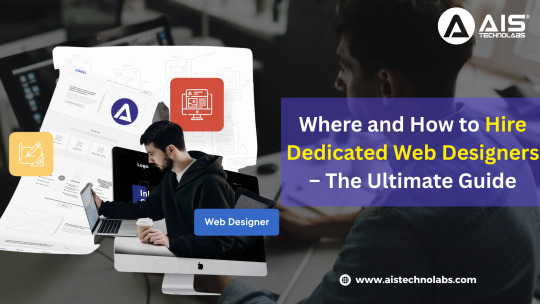
Introduction
In today's digital-first world, web designers are the backbone of all successful company sites. As your online appearance increases, your site needs to expand and update regularly. From creating a new destination page to increasing the user experience and integrating the latest web tools, the work of a dedicated web designer is not really completed.
Companies are constantly developing their products, services and features, which require web pages, user interfaces and ongoing updates for interactive material. Without a skilled web design team, companies are struggling to maintain performance, design quality and functionality that modern users expect.
If you are planning to hire dedicated web designers or as part of your own team or external-this guide will help you understand where to start the web design effort with real business results and how to interact.
What is a Dedicated Web Designer and Why Hire One?
Understanding the Role of a Dedicated Web Designer
When you Hire dedicated web designers, you are completely linked to a professional focused on your project - no task exchange or distraction. Unlike freelancers who arouse many customers, a dedicated full -time web designer is obliged to understand your business, brand, users and goals. They mix aesthetic design with targeted and functionality, and make sure your site looks good and performs well.
Benefits of Hiring a Dedicated Web Designer
Consistency & Reliability:A designer focused on your project makes a total design and time progress.
Strategic Collaboration: They match design decisions with your business goals - important for marketing persons and start -up.
Expertise & Quality:India-based or otherwise, to Hire web designers, you could get entry to skills that combine visual creativity with UX first-rate exercise.
Cost-Effective Solutions:Dedicated designers maximize return on funding, specially in comparison to piecemeal freelance strategies.
Different Types of Web Design Professionals
When you decide to hire dedicated web designers, it's important to know the types of professionals available:
Graphic Designers
Graphic designers excel in branding, visible layouts, and color principles. While they will not construct live websites, their works form the backbone of your web site's aesthetic.
2D and 3D Animation Experts
For interactive or immersive web experiences, animation specialists bring static pages to life through motion—a strong asset for tech enthusiasts and creative startups.
Web Designers with Some Coding Knowledge
These hybrid pros not only design but also implement via HTML,CSS, and JavaScript. They’re ideal if you want someone to bridge design with front-end development.
Web Designers without Coding Knowledge
Focused purely on design tools like Sketch, Figma, or Adobe XD, they produce wireframes, mockups, and visual assets—but will need handoff to a developer for implementation.
Web Developers with Basic Design Skills
Flipping the typical role, these are developers who additionally carry out design duties. They're more tech-focused and can be suitable if capability outweighs visuals in your project.
Why Hire Dedicated Web Designers?
Focused Attention: A dedicated designer completely immerses himself in his brand and requires the ideal branding device for startups or non -profitable.
Efficient Communication:You get a consistent point of contact instead of many freelancers.
Adaptability: Designers live a long time, make sure your site develops with your business.
Better ROI: An invested designer gives prices in redesign, features and maintenance tasks.
Where to Find Dedicated Web Designer Resources
1. Outsourcing Platforms
Upwork, Freelancer, Guru: Post your job to global talent. Searching “hire web designer India” filters thousands of professionals cost‑effectively.
Toptal: Ideal for top‑tier web designers with high quality and vetted credentials.
2. Design‑Specific Sites
Dribbble, Behance: Browse portfolios, then message designers to create dedicated roles.
99designs: Launch contests to find ideal designers—and then hire dedicated web designers directly from top submissions.
3. Indian Agencies & Freelancers
India is known for cost-effective talent. Search keywords like hire dedicated web designer or hire web programmer in India to find agencies and independent creatives who cater to both local and international clients.
4. Networking & Referrals
For nonprofits, blogging professionals, and individuals, recommendations from peers or professional networks can lead to reliable, hardworking designers who are passionate about your mission.
Understanding the Web Design Process
What Happens After You Hire a Dedicated Web Designer?
Discovery & Research
Kickoff with stakeholder interviews, competitive analysis and user research.
Project scope -pages, features, branding lines, define SEO goals.
Wireframing & Prototyping
Low-fidelity sketches evolve to high-fidelity mockups using Figma or Adobe XD.
Interactive prototypes allow stakeholders - to test business owners, non -precious and violent - location structure and flow.
Visual Design
Designers apply branding elements, imagery, colors, and typography.
This stage is vital for marketing professionals focused on conversion and messaging.
Development Handoff (if needed)
For designers without coding, finalized assets are handed off to web developers—front-end or full-stack.
Implementation & Testing
Web pages are built, responsive across devices, followed by performance, usability, and browser tests.
Launch & Maintenance
Sites go live and are monitored for SEO, analytics, and security.
Ongoing updates, feature requests, and iterative improvements follow.
Collaboration and Feedback Loops
Regular checkpoints: Weekly or double weekly meetings match designers and stakeholders.
Feedback integration: Designers change the design based on business owners, marketing teams and not -profit organizations.
Scope Control:A clear version control strategy avoids crawling scope.
Testing & Iteration: A/B testing and user response fine adjustment design after launc
Final Thoughts
Hiring a dedicated web designer is a smart move for startups, organizations, bloggers, and nonprofits aiming to reinforce their online presence. Whether you hire web designer in India or a companion who is dependent on a business enterprise like AIS Technolabs, you gain professional design, higher overall performance, and lengthy-time period fee. Choose the right partner, and your web site turns into an effective device for tools for growth.Know more>>https://medium.com/@ridh57837/where-and-how-to-hire-dedicated-web-designers-the-ultimate-guide-75680888bf71
#hire web designer india#hire dedicated web designer#hire dedicated web designers#hire web designer in india#dedicated web designer
0 notes
Text
Learn how to transform your Figma designs into beautiful and functional websites using this step-by-step guide.
#Figma to HTML Code#Figma to HTML#Figma to HTML Conversion#Convert Figma to HTML#Figma to Code#Figma to HTML Conversion Services#Figma Designs to Websites#Figma to Websites#PSDtoHTMLNinja
0 notes
Text
The Complete Timeline of a Web Development Project, Explained
Building a professional website or web application isn’t a one-week job. From planning and design to development and deployment, a successful project moves through multiple stages—each requiring time, collaboration, and precision.
Working with a Web Development Company helps streamline this timeline, but it’s still important for business owners and marketing teams to understand what happens behind the scenes. Whether you're launching a brand new website or rebuilding an existing one, here’s a complete breakdown of the typical web development project timeline.
1. Discovery & Requirement Gathering (1–2 Weeks)
Every successful project starts with a solid foundation. In this initial phase, the development team learns about your business, audience, goals, and technical needs. It includes:
Stakeholder interviews
Competitor research
Target audience analysis
Site goals and KPIs
Content inventory
You may also receive a project brief or proposal outlining the scope, budget, timeline, and deliverables.
2. Planning & Strategy (1 Week)
Once the goals are set, the agency maps out a strategy for execution. This involves:
Information architecture (sitemap planning)
Feature prioritization
Tech stack decisions (CMS, frameworks, integrations)
Timeline finalization
This is also when timelines are broken down into milestones and dependencies.
3. UX Wireframing & UI Design (2–3 Weeks)
Before development begins, the design team translates ideas into wireframes—basic layouts showing page structure and user flow. Once approved, they create high-fidelity UI designs, which reflect:
Brand identity and colour palette
Typography, buttons, and icon styles
Desktop and mobile responsiveness
You’ll typically review these designs through Figma or Adobe XD.
4. Front-End & Back-End Development (3–6 Weeks)
Once designs are locked, development begins. This is usually the most time-intensive phase and may include:
HTML/CSS/JavaScript coding for the front-end
Framework integration (React, Vue, Next.js, etc.)
Server-side logic, database setup, and CMS configuration
API development and third-party tool integration
Developers often work in sprints, especially for large projects.
5. Content Migration & SEO Optimization (1–2 Weeks)
If you're revamping an old website, content migration is a critical step. Even in new builds, SEO is baked in at this stage:
Migrating blog posts, media, and product pages
Adding meta tags, alt text, canonical URLs
URL mapping and redirection strategy
Page speed improvements and schema markup
Good agencies align this with SEO goals to prevent traffic loss post-launch.
6. Quality Assurance (QA) & Testing (1–2 Weeks)
Before going live, the site is tested across:
Browsers (Chrome, Firefox, Safari, Edge)
Devices (desktop, mobile, tablet)
Screen sizes and resolutions
Functionality (forms, login, search, checkout, etc.)
Agencies also perform performance testing, accessibility audits, and security reviews at this stage.
7. Client Review & Final Revisions (1 Week)
Once QA is complete, the client is invited to review the staging site. This is your opportunity to:
Test the site internally
Flag any issues or edits
Ensure all content is accurate and brand-aligned
A final round of tweaks is made based on feedback before moving to deployment.
8. Deployment & Launch (1–3 Days)
When everything is greenlit, the website goes live. This involves:
DNS updates and domain pointing
Hosting configuration and SSL setup
Backend logins and access control
Real-time analytics and conversion tracking setup
A soft launch or phased rollout may be used to reduce risk.
9. Post-Launch Support & Maintenance (Ongoing)
Your relationship with the development team doesn’t end at launch. Ongoing services include:
Bug fixes and patch updates
CMS training and admin access
Plugin and theme updates
Security monitoring and backups
Performance optimization
Some companies also offer retainers for regular content updates or feature enhancements.
Conclusion
From discovery to deployment, a web development project can take anywhere from 6 to 12 weeks depending on complexity, content readiness, and collaboration speed. When planned properly, each phase builds on the last to deliver a site that performs, converts, and scales with your business.
Partnering with a Web Development Company ensures each stage is handled by experts—reducing delays, avoiding common pitfalls, and launching a product that aligns with your goals from day one.
0 notes
Text
Freelance Web Development Useful Tricks
In today’s digital age, businesses and individuals are constantly seeking professional help to build and maintain their online presence. This surge in demand has paved the way for a booming market in freelance web development. Whether you're a seasoned Freelance Web Developer or just stepping into the world of freelance work, learning a few practical tricks can significantly improve your productivity, client relationships, and project outcomes.
This guide provides useful tips and insights tailored for those working as a Freelance Web Designer, Web Developer Singapore, or a Freelance Website Developer Singapore.
1. Define Your Niche
As a Freelance Web Designer, the first step to building a successful career is finding your niche. Instead of trying to serve everyone, focus on a specific market. For example, becoming a Freelance Website Designer Singapore who specializes in e-commerce platforms can help you attract targeted clients.
Narrowing your services helps you become an expert in that area, making it easier to deliver higher-quality results and command better rates.
2. Build a Professional Portfolio
Your portfolio is your most powerful marketing tool. As a Freelance Web Developer Singapore, it's important to showcase not just finished websites but also the thought process behind them. Include case studies, user experience improvements, and before/after examples.
Clients in web design Singapore often prefer seeing real-world applications. A well-crafted portfolio tells them you are the right Website Designer Singapore for the job.
3. Use Contracts for Every Project
A common mistake new freelancers make is working without a contract. A good contract outlines the project scope, deadlines, payment terms, and revision limits. Whether you’re a Freelance Website Designer or Freelance Web Developer, having a legal agreement helps protect both parties and sets clear expectations.
Especially in regions like Singapore, where business professionalism is crucial, this step adds to your credibility.
4. Embrace Web Design Tools
Leveraging the right tools can save hours of work. Platforms like Figma, Sketch, and Adobe XD are essential for any Freelance Web Designer Singapore. Similarly, GitHub and GitLab are invaluable for version control if you're a Freelance Website Developer.
These tools not only streamline your workflow but also make collaboration easier with clients and teams.
5. Master Responsive Design
Clients expect websites to look perfect on all devices. Mastering responsive design is critical for any Web Developer Singapore. Use flexible grids, images, and CSS media queries to ensure that your designs look and function well on desktops, tablets, and smartphones.
This is especially important in Singapore, where mobile usage is among the highest in the world.
6. Optimize for SEO
A beautiful website is of little use if it can't be found online. Every Freelance Website Designer and Freelance Web Developer Singapore should have a working knowledge of SEO fundamentals. This includes optimizing page speed, using semantic HTML, and ensuring that websites are mobile-friendly.
Clients looking for web design Singapore services often prefer professionals who can provide both design and SEO support.
7. Keep Up With Trends
The web design and development industry is always evolving. Trends like dark mode, voice search optimization, and minimalistic design are shaping the future. As a Freelance Web Designer, staying updated helps you offer modern and appealing designs to your clients.
Being knowledgeable about trends makes you a more competitive Website Developer Singapore or Freelance Website Designer Singapore.
8. Communicate Clearly and Frequently
Good communication is the backbone of freelance success. Regular updates, clear explanations, and managing client expectations are crucial. If you're a Freelance Website Developer in Singapore, effective communication can help you stand out in a market known for its high standards.
Always confirm client needs and follow up with written summaries after meetings.
9. Time Management is Key
Freelancing gives you flexibility, but it also requires discipline. Use project management tools like Trello, Asana, or Notion to organize tasks and deadlines. A Freelance Website Developer Singapore handling multiple clients will benefit greatly from scheduling tools and time tracking apps.
Meeting deadlines consistently will build your reputation as a reliable Website Designer Singapore.
10. Offer Maintenance Services
Many clients need ongoing support after a website goes live. Offering maintenance packages—such as updates, backups, and minor tweaks—is a smart way for any Freelance Web Developer to earn recurring revenue.
In the competitive web design Singapore industry, providing post-launch support can give you an edge over others.
11. Leverage Social Proof
Gather testimonials from satisfied clients and display them prominently on your website. As a Freelance Web Designer Singapore, social proof builds trust and credibility. Encourage clients to leave reviews on platforms like Google, LinkedIn, or Clutch.
It helps potential clients feel more confident in hiring you as their Website Developer Singapore.
12. Price Your Services Smartly
Pricing can make or break a freelance career. Research market rates and consider the complexity of the project before quoting. Whether you're a Freelance Web Developer Singapore or Freelance Website Designer, avoid underpricing just to get a job—it can hurt your business in the long run.
Offer tiered pricing packages to give clients options that match their budget.
13. Network Within the Local Community
Even in a digital world, word-of-mouth still matters. Attend local meetups, seminars, and webinars related to web design Singapore. Building relationships with other professionals can lead to referrals and collaborations.
Being known in the local scene can greatly benefit a Freelance Web Developer Singapore or Freelance Website Developer Singapore.
14. Invest in Learning
Technology changes fast. Take time to learn new frameworks, design patterns, or CMS platforms like WordPress, Webflow, or Shopify. This is especially useful for a Freelance Website Designer Singapore targeting clients in different industries.
Courses from Udemy, Coursera, or free resources like MDN Web Docs can help you stay ahead.
15. Protect Your Work
Always keep backups and secure your source code. Use version control systems and cloud storage to ensure that no data is lost. As a Freelance Website Developer, protecting your work is as important as creating it.
For those in Singapore, where clients expect high data integrity and privacy, security is a must-have skill.
16. Build a Personal Brand
Branding isn’t just for big businesses. As a Freelance Web Designer Singapore, having a personal brand can help you stand out. Use consistent colors, a unique logo, and a professional tone across your website and social profiles.
Your brand is your identity—make it memorable.
17. Specialize in CMS Platforms
Many small businesses prefer using content management systems for easy updates. Specializing in WordPress, Joomla, or Drupal can be a game changer for a Freelance Website Developer Singapore.
Offering CMS-based solutions can expand your market reach in web design Singapore.
18. Set Client Boundaries
To avoid burnout, it's essential to set clear boundaries regarding your work hours, communication channels, and project scope. Many Freelance Web Designers fall into the trap of being available 24/7.
Define and communicate your availability upfront.
19. Ask for Referrals
Don’t hesitate to ask satisfied clients to refer you to others. Referrals are one of the best ways to grow your freelance business. A Freelance Web Developer Singapore can benefit immensely from personal recommendations.
Referrals reduce your need for marketing and often lead to higher-quality clients.
20. Stay Consistent
Consistency is key in delivering quality results and growing your business. Whether you’re a Freelance Website Designer Singapore or a Website Developer Singapore, being consistent in your communication, design style, and deadlines will build trust.
It’s this consistency that builds long-term success.
Final Thoughts
Freelance web development can be a highly rewarding career, but it requires dedication, continuous learning, and smart business practices. Whether you’re a Freelance Web Designer, Freelance Website Developer, or Freelance Web Developer Singapore, applying these tricks can help you improve your workflow, increase client satisfaction, and scale your freelance business effectively.
The demand for quality web design Singapore professionals continues to grow. By sharpening your skills and following the best practices, you can stand out as a top-tier Website Designer Singapore or Website Developer Singapore in a competitive market.
Remember, success in freelancing doesn’t happen overnight. But with consistent effort, a strong portfolio, and these practical tips, you’ll be well on your way to becoming a sought-after Freelance Web Designer Singapore.
Visit https://www.freelancewebdesigner.sg to learn on Website development in Singapore.
#freelance web designer singapore#website designer singapore#web design singapore#web designer singapore#website developer singapore#web developer singapore
0 notes
Text
Figma to HTML conversion Service
We can help you convert Figma design to HTML CSS. Build a fully responsive, clean, high-quality website with our Figma to HTML conversion services.

#figma#html#figma to html#figma to html conversion#create a figma to html#figma to html conversion servicers
0 notes
Text
Top 10 E-commerce Design Trends for Shopify Stores in 2024: The Future of Shopify Theme Aesthetics and Functionality
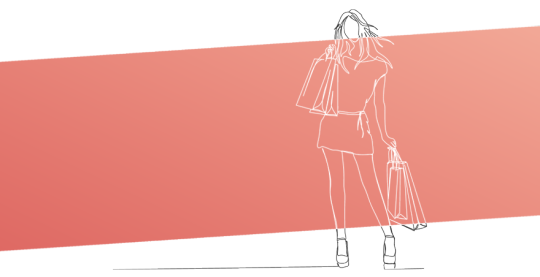
The e-commerce landscape constantly evolves, and staying ahead of design trends is crucial for Shopify store owners looking to stand out and captivate their audience. As we enter 2024, several design trends shape the online shopping experience.
Here, we explore the top ten e-commerce design trends and how to implement them in your Shopify store to enhance aesthetics and user experience.
1. Minimalism: Less is More
The minimalist design continues to dominate the e-commerce space, emphasizing clean lines, uncluttered layouts, and a focus on essential elements. To implement this trend in your Shopify store, reduce visual clutter, use ample white space, and highlight your products with high-quality images.
2. Dark Mode: Elegance and Comfort
Dark mode offers a stylish look while reducing eye strain for users. Incorporate dark mode options in your Shopify store to provide a comfortable browsing experience, especially for customers shopping in low-light environments.
3. Custom Illustrations: Personalize Your Brand
Custom illustrations add a unique touch to your store, setting you apart from competitors.
Use bespoke illustrations to convey your brand’s personality, tell a story, or explain complex products and services.
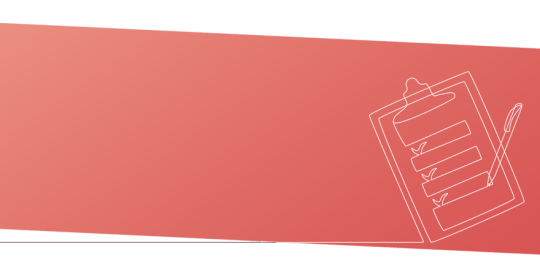
4. Dynamic Product Grids: Engage and Excite
Move away from traditional grid layouts and experiment with dynamic product grids. Mix different sizes and orientations to create a more engaging and visually appealing product display.
5. Bold Typography: Make a Statement
Typography is not just for reading; it’s an essential design element.
Use bold, expressive fonts to grab attention, convey brand identity, and guide users through your site.
6. Microinteractions: Enhance User Engagement
Microinteractions are small animations or effects when users interact with your site. Use them to provide feedback, encourage actions, or add a layer of polish to your store’s design.
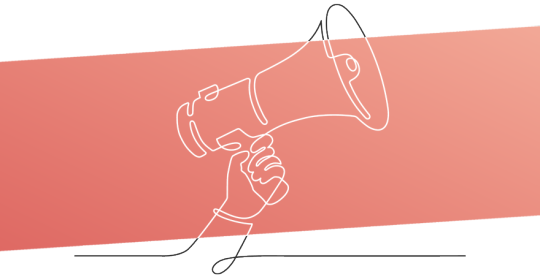
7. Mobile-First Design: Prioritize the Small Screen
With more consumers shopping on mobile devices, a mobile-first approach is essential. Design your Shopify store with mobile users in mind, ensuring easy navigation, fast loading times, and accessible design elements.
8. Augmented Reality (AR): Try Before You Buy
AR technology allows customers to visualize products in their own space before purchasing. Integrate AR into your Shopify store to enhance product pages and provide a more immersive shopping experience.
9. Sustainability and Social Responsibility: Build Trust
Consumers increasingly seek brands that align with their beliefs, ethics, and values. Highlight your store’s commitment to sustainability and social responsibility via design elements, such as eco-friendly product badges or a dedicated ‘Our Values’ section.
“You are the light of the world — like a city on a hilltop that cannot be hidden. No one lights a lamp and then puts it under a basket. Instead, a lamp is placed on a stand, where it gives light to everyone in the house. In the same way, let your good deeds shine out for all to see, so that everyone will praise your heavenly Father. — Matthew 5:14–16
10. Voice User Interface (VUI): The Future of Search
As voice search becomes more popular, optimizing your Shopify store for voice queries becomes increasingly noteworthy. Implement VUI design principles to ensure your store is easily navigable and searchable through voice commands.
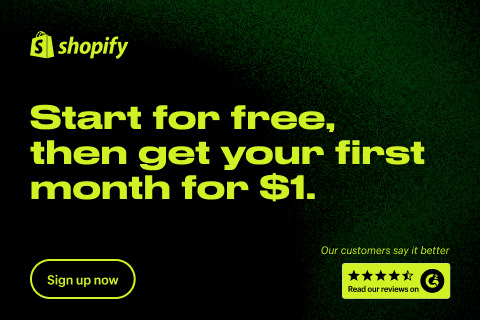
By embracing these design trends, you can create a Shopify store that looks modern and professional and enhances your customers’ shopping experience.
Stay ahead of the curve, and watch your e-commerce business thrive in 2024.
#shopify#e commerce#business#e commerce business#ux desgin#ui design#ux ui design#ui ux design#web design#graphic design#canva#adobe#adobe photoshop#adobe illustrator#adobe stock#adobe firefly#figma#figmadesign#figma to html#sketch#xd#liquid#apps#shopify agency#shopify app development#shopify developers#shopify development company#shopify development agency#shopify development services#outsourcing
0 notes
Text
Top Web Designing Classes in Ahmedabad | Learn with ICEI India
In the fast pace of today’s digital-driven age, it’s not a luxury to have a good website anymore, It’s a necessity. Business, portfolio, online shop, etc., all need a site to be the bridge between you and your targeted audience, and quickly become the first tool to use your product or service. This increase in net presence has created a much higher demand for professional web designers, particularly in places like Ahmedabad, where digital transformation has taken over in every industry.
If you are a creative-minded individual and have an interest in technology, then joining web designing classes in Ahmedabad will guide you to a successful career path. These courses give you more than just technical skills – they cultivate creativity and an ability to make beautiful, user-friendly websites.

Why Do Web Designing Courses?
The art of web design offers a lot of career prospects and forces training in it. Here is why you should be joining web design classes in Ahmedabad:
Skill Acquisition: Get the tools of the trade, including HTML, CSS, JavaScript, Adobe XD, and Figma.
Career Choices: Work as a UI/UX Designer, Front-end Developer, Freelance Web Designer.
Creativity at work: Show off your design skills as you complete tasks.
High demand: With the “move everything online” business in full swing, web designers are in higher demand than ever.
ICEI India: Best for Web Designing Classes in Ahmedabad
As fairness pageants are held from 12 months to year n extreme faculties, universities, and group amenities all in the position the region boys and ladies display up at accommodate up in gowns and carry out their knowledge the ambiance of leisure, ICEI India is the well identified for the greatest net style instruction in Ahmedabad. Focussed on enabling budding designers and developers, ICEI India supplies an in-depth skillset, hands-on experience, and certificates to match the growing needs of the IT and Fashion design industry.
What Makes ICEI India Unique?
Experienced Faculty: Get training from experienced professionals working in design and development.
Practical Learning: Gain exposure to the real world through live projects, case studies, and interactions.
Modern Facilities: Fully-stocked Labs, High-speed internet, and the Best Software.
Career Assistance: Help with drafting a resume and job placement.
ICEI India: The Institute of Computer Education and Training (ICEI) India offers courses and Workshops
The web designing course designed by ICEI India is tailor-made to fit both beginners as well as advanced learners. Some of the best offerings are as follows:
Certificate Course on Web Designing: Includes HTML5, CSS3, Bootstrap, JavaScript & jQuery.
UI/UX Design Program: Delve into user-centric design, wireframing, prototyping, and testing.
Responsive Web Design Workshop: Build mobile-friendly websites that scale to any screen.
GRAPHIC & WEB COMBO COURSE: Blend graphic design and front-end development.
Certification is available upon course completion so that you can include it on your resume and stand out in the job market.
Success Stories That Inspire
ICEI India is happy to have a network of successful alumni who are working with leading technology firms, running their design studios, and freelancing for global clients. Their journeys stand testimony to the training and guidance one receives at ICEI India.
Enrol now and shape your career in design
And if you’re ready to start learning how to use tools that can take you through the looking-glass and into a place where art has no limits, there’s no time like now to get involved with web designing classes in Ahmedabad at ICEI India. Student, professional, or entrepreneur–whatever your learning level, the experience is designed to work for you.
Contact ICEI India Today
0 notes
Text
Learn Web Design in Chelmsford – Courses, Skills & Career Paths
Are you ready to unlock your creative potential and build a rewarding career in web design? Whether you're a student, career changer, or creative professional based in Chelmsford, this comprehensive guide will help you discover the best ways to learn web design locally in 2025. From foundational skills to advanced techniques, explore courses, essential tools, and career opportunities tailored for Chelmsford learners looking to master web development, UI/UX design, and digital creativity.
Why Learn Web Design? Benefits and Career Opportunities
Learning web design opens doors to versatile career paths in today's digital landscape. As websites remain crucial for Web Design Essex businesses, organisations, and personal brands, skilled web designers who understand user experience (UX), user interface (UI), and responsive design are highly sought after.
Web design jobs in Chelmsford and beyond offer roles such as front-end developer, UI/UX designer, graphic designer, and freelance web designer. It’s an ideal field for those seeking a career change or a flexible freelance lifestyle. Plus, combining web design with digital marketing or e-commerce design skills adds tremendous value to your professional profile.
Benefits of learning web design include:
Creative expression through interactive digital media High demand for technical and design expertise in local businesses Potential for freelancing and remote work flexibility Strong foundation for web development or digital marketing careers Ability to launch your own agency or website design services
Web Design Skills You Will Learn
Mastering web design requires a blend of coding knowledge, aesthetic design sense, and tool proficiency.
Essential Coding Languages for Web Design
At professional web design company the core of web design are coding languages like HTML, CSS, and JavaScript. These build the structure, style, and interactivity of websites.
HTML – Forms the backbone by structuring content and webpages CSS – Styles webpages, controlling layouts, fonts, colours, and responsiveness JavaScript – Adds dynamic behaviour and enhances user interaction
Many Chelmsford courses offer hands-on coding tutorials, helping beginners learn to code effectively via online or in-person formats.
Design Tools and Software
Proficiency with modern design software is essential for wireframing, prototyping, and creating stunning visuals.
Adobe Photoshop – Editing graphics and images for websites Figma and Sketch – Popular tools for UI/UX design, collaboration, and prototyping Adobe Illustrator – Creating scalable vector graphics like logos and icons Wireframing and prototyping tools that streamline the design process
Learning these tools equips you to create visually compelling and user-friendly website designs.
Types of Web Design Courses Available in Chelmsford
Chelmsford offers a variety o
0 notes
Text
BUSINESSES NEED INTEGRATED DIGITAL SOLUTIONS
INTRODUCTION
In today’s fast-paced digital world, businesses need more than just a website or a Facebook page to stand out. They need a complete, well-integrated digital strategy that connects with customers, drives growth, and builds trust. That’s where ELOIACS comes in.
ELOIACS is a full-service digital company that provides everything from Digital Marketing to Web Development, UI/UX Design, PDF Accessibility, E-Books Conversion, and Data Entry. This blog dives deep into each of our services and shows how we help businesses grow with effective digital solutions.
WHY NEED INTEGRATED DIGITAL SOLUTIONS
As the online marketplace becomes more competitive, businesses can't afford to manage multiple digital vendors. Integrated services allow for:
Seamless brand consistency
Faster project timelines
Better communication
Lower overall costs
When your marketing, design, and development teams work under one roof, your business runs more efficiently. Imagine launching a new product with a custom website, strategic ad campaign, beautiful UI design, and accessible content—all handled by one team.
ELOIACS: YOUR COMPLETE DIGITAL SERVICE PARTNER
At ELOIACS, we believe in transforming digital ideas into real-world impact. Our team is made up of specialists in every area of the digital ecosystem. We serve startups, established companies, and eCommerce brands across India and beyond. We work closely with clients to understand their goals and deliver custom solutions that bring measurable results.
SERVICE 1: DIGITAL MARKETING
In a digital-first world, marketing is more than just posting on social media. Our digital marketing services include:
SEO (Search Engine Optimization): Helping your website rank on Google for relevant keywords.
PPC (Pay-Per-Click) Advertising: Google Ads, Facebook Ads, and more to drive targeted traffic.
Social Media Management: Growing your brand presence on Instagram, Facebook, LinkedIn, and Twitter.
Email Campaigns: Connecting directly with your audience through personalized email.
We use tools like SEMrush, Meta Ads Manager, and Google Analytics to build strategies that are data-driven and goal-oriented. Our campaigns have helped clients gain visibility, boost leads, and increase ROI.
SERVICE 2: WEB DEVELOPMENT
Your website is the digital face of your brand. ELOIACS designs and develops modern, responsive, and SEO-friendly websites that drive engagement.
We specialize in:
Custom Website Development
WordPress and CMS-based Websites
eCommerce Stores (WooCommerce, Shopify, Custom PHP)
Our tech stack includes HTML, CSS, JavaScript, PHP, Laravel, and more. Whether you’re launching a new site or revamping an old one, we make sure it loads fast, looks great, and performs even better.
SERVICE 3: UI/UX DESIGN
User Interface (UI) and User Experience (UX) design are at the heart of every digital product. We design experiences that are not just visually appealing but also user-centric.
Our UI/UX services include:
Wireframes and user journey mapping
Interactive prototypes
Design systems and brand consistency
We use Figma, Adobe XD, and other design tools to create layouts that engage users and increase conversions.
SERVICE 4: PDF ACCESSIBILITY
PDF Accessibility ensures your digital documents are usable by people with disabilities. This is crucial for legal compliance (like ADA and WCAG) and inclusivity.
ELOIACS provides:
Proper tagging structure
Alt text for images
Logical reading order
Accessible navigation
Our services are trusted by educational institutions, healthcare organizations, and government bodies. We ensure your content reaches every user, regardless of ability.
SERVICE 5: E-BOOKS CONVERSION
With the rise of digital reading, converting documents into eBooks is essential. We convert PDFs, Word docs, and other formats into ePub, MOBI, and AZW3 formats.
Our process includes:
Formatting for multiple devices
Designing covers and layout
Optimizing for Kindle, iBooks, and Android readers
This service is perfect for authors, publishers, and educators looking to distribute content in a digital-friendly format.
SERVICE 6: DATA ENTRY SERVICES
Accurate data is critical for business operations. Our data entry team handles:
Manual and automated data entry
CRM data population
Inventory and catalog data
Spreadsheet cleanup and formatting
We ensure 100% accuracy, fast turnaround times, and data security. From large databases to small record entries, we manage it all with precision.
WHY CHOOSE ELOIACS FOR MULTI-DIGITAL SERVICES
Here’s what makes us stand out:
One-stop solution: No need to juggle different vendors
Expert team across all services
Affordable packages for startups and enterprises
Focus on quality, performance, and deadlines
We don’t just deliver projects—we build partnerships. Our long-term clients stay with us because we help them grow consistently.
HOW TO START WORKING WITH ELOIACS
Getting started is easy:
Book a free consultation via https://eloiacs.com
Share your goals and challenges
Receive a custom strategy and timeline
Work with a dedicated project manager and expert team
From day one, you get full transparency, clear communication, and professional service.
CONCLUSION
In a world where digital is everything, ELOIACS helps you stay ahead. Whether you need marketing, a new website, accessible documents, or data support, we have the tools and team to make it happen.
0 notes
Text
Web Design and Development Course in Kolkata – Your Gateway to a Digital Career

In a city buzzing with creativity and emerging tech opportunities, Kolkata has become a rising hub for web design and development training. Whether you're a student aiming to enter the IT industry or a professional looking to upskill, enrolling in a web design course in Kolkata can be the career-defining step you need.
Why Web Design & Development Is a Future-Proof Skill
The internet isn’t slowing down. Every business, from startups to large enterprises, needs a digital presence that performs—and looks great. This has made web designers and developers some of the most sought-after professionals today.
A comprehensive website development course in Kolkata gives you hands-on skills in coding, user interface (UI), responsive layout techniques, content management systems like WordPress, and front-end languages like HTML, CSS, and JavaScript. When combined with design principles, UX strategy, and a portfolio of real projects, you’ll be equipped to stand out in a competitive job market.
Who Should Take a Web Design and Development Course in Kolkata?
One of the strengths of this field is its accessibility. You don’t need a degree in computer science to get started—just a passion for design and problem-solving.
Students: Fresh graduates seeking an IT career
Career switchers: Those in traditional fields (commerce, arts, etc.) transitioning into tech
Freelancers: Creative professionals looking to offer digital services
Business owners: Entrepreneurs who want to manage their own websites
Courses are often structured to accommodate beginners, while advanced modules are available for those looking to specialize.
What to Expect in a Quality Web Design Course in Kolkata
Institutes in Kolkata now offer cutting-edge training environments. You can expect the curriculum to include:
Responsive Web Design: Creating mobile-first websites that adapt to different screens.
HTML5, CSS3 & JavaScript: Core coding languages for layout and interactivity.
Bootstrap & jQuery: Frameworks that speed up development.
Graphic Design Tools: Basics of Photoshop, Illustrator, or Figma for UI/UX.
Live Projects: Real client simulations to build your portfolio.
CMS Training: WordPress or Shopify to power dynamic websites.
Advanced programs also integrate SEO, analytics, and hosting knowledge, preparing you to not just build but launch and manage complete websites.
Benefits of Learning Locally in Kolkata
Why not just take an online course? Because local institutes offer the one thing online platforms can’t: community and mentorship.
By enrolling in a web design and development course in Kolkata, you gain access to:
Personalized mentorship from industry-active professionals
Networking with peers and local businesses
Campus-based workshops, hackathons, and project showcases
Placement support with local IT firms and startups
Additionally, regional instructors often tailor content to what local employers are actively seeking—making you job-ready, not just certificate-ready.
How to Choose the Right Institute
The quality of your learning experience depends heavily on the institute you choose. Look for:
Industry-experienced trainers
Updated curriculum with live projects
Small batch sizes for personalized attention
Placement support or internship options
Transparent reviews and success stories
When these criteria are met, you’re not just learning—you’re preparing for employment from day one.
Your Career After Course Completion
Web designers and developers are vital to every industry, from e-commerce and education to fintech and entertainment. After completing your course, you can explore roles like:
Front-End Developer
Web Designer (UI/UX)
WordPress Developer
Freelance Web Developer
Website Maintenance Specialist
Many also branch into adjacent fields like graphic design, SEO, and digital marketing—boosting both versatility and income potential.
Final Thoughts
The digital economy is here to stay. And the demand for skilled web designers and developers will only grow. If you're ready to build the future, a well-structured design and website development course in Kolkata might be your first step toward it. With the right training and mindset, you won’t just find a job—you’ll create opportunities.
#Web Design Course Kolkata#Website Development Course in Kolkata#web design and development course in kolkata
0 notes